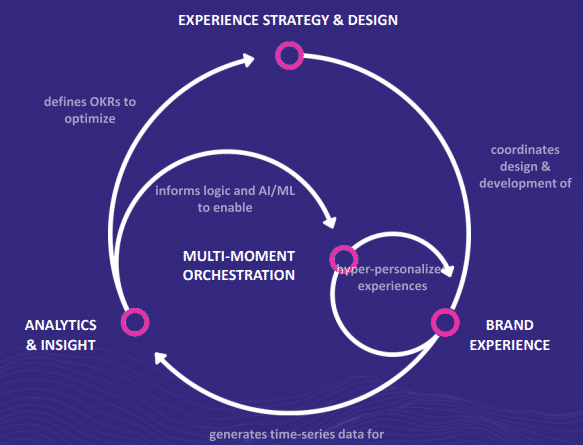How to drive engaging brand experiences with co-innovation
Co-innovation lets marketers use their engagement tools more effectively.
“There are two forms of innovation: innovation for the purpose of doing better things, and the innovation of doing things better,” said Dave Mankowski, chief growth officer of Bounteous, in his session at our MarTech conference. “‘Better things’ are those methods that are more disruptive, those that are challenging and changing the business model.”
Innovation is what drives customer engagement with your brand. It takes it to a whole new level, says Mankowski: “And it certainly requires talent and certain team structures and methods to drive those interactions amongst the teams.”
But if brands want to have better things — like increased engagement — marketers would be wise to adopt what’s called ‘co-innovation.’ This form of innovation highlights the value of working with qualified partners to give customers memorable experiences.
“It’s about being collaborative,” Mankowski said. “You can’t outsource innovation completely, but you can accelerate it with how you engage the right partners.”
Mankowski invited marketers to focus on three core components to help drive engaging brand experiences through co-innovation.
Digital Flow
“Digital flow is about how your analytics both helps drive your brand experience and orchestrates experiences with consumers,” Mankowski said.

He pointed to a digital flow illustration that highlighted each piece that drives brand experiences: “There’s an outer ring to this [illustration] and there’s an inner ring The outer ring asks how you design and build your ‘car,’ and the inner asks how you’re using the car to win races.”
Marketers can work toward increased engagement using this ‘flow’ framework. Connecting analytics and insights to experience strategies can help create hyper-personalized campaigns.
Critical audience insights
Markowski highlighted Domino’s — a popular brand most consumers are familiar with — and how it transformed their customers’ digital experiences amid COVID-19 using co-innovation. Its engagement efforts helped it capture important insights. leading to enhanced customer personalization.

Domino’s has one of the best marketing stories, according to Mankowski. Their original 30-minute delivery campaign paved the way for later success in digital transformation — the pizza tracker. This tool helped build brand loyalty by offering transparency in their operations while also reducing real and perceived delivery times.
Domino’s digital experience became the brand through co-innovation with savvy marketing technologists, so it was able to draw unique insights from customers through these interactions.
Enablement modeling
Building deeper relationships with customers is much easier using co-innovation strategies. To do this, companies should craft enablement models — frameworks that combine talent, data, marketing technology, and methodologies — to provide users with an innovative brand experience.

“As your brand grows and scales, the way that you use data, people, and methods to drive experiences is as important as the enabling tools,” Mankowski said.
Marketers can use enablement models to help ensure they’re co-innovating engaging brand experiences. When these pieces are aligned, your audience will have an easier time seeing what your brand has to offer.
“Being clear about processes and the roles and responsibilities is critical to being able to scale up these activities across channels, audiences, and segments,” he added.
Watch the full presentation from our MarTech conference here (free registration required).
Opinions expressed in this article are those of the guest author and not necessarily MarTech. Staff authors are listed here.
Related stories
